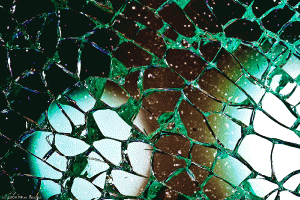Enter your address to receive notifications about new posts to your email.
Articles by Sarah Bay (41 results)
-
Genomic study of high school students from across Denmark reveals remarkable genetic homogeneity
People from Denmark are genetically similar to each other no matter which part of the country they come from, report researchers in the journal GENETICS, a publication of the Genetics Society of America. Eight hundred Danish high school students contributed genetic material to the Where Are You From? project, and the data were used to…
-
Kindred and KhoeSan: African ancestry is tied to ecogeography
Geography and ecology are key factors that have influenced the genetic makeup of human groups in southern Africa, according to new research discussed in the journal GENETICS, a publication of the Genetics Society of America. By investigating the ancestries of twenty-two KhoeSan groups, including new samples from the Nama and the ≠Khomani, researchers conclude that…
-
Incredible Images from #TAGC16
The Allied Genetics Conference was a combined meeting of seven genetics research communities held July 13-17, 2016 in Orlando, Florida. Many talks given throughout the meeting featured compelling images and videos that generated a lot of buzz in various communities. Here, Genes to Genomes is excited to highlight just a few of the wonderful scientific images shared at #TAGC16.…
-
#TAGC16 Shorts: Keeping histone marks leads to losing marbles
#TAGC16 Shorts are brief summaries of presentations at The Allied Genetics Conference, a combined meeting of seven genetics research communities held July 13-17, 2016 in Orlando, Florida. One of the earliest events in development is the switch to self sufficiency. Soon after an egg is fertilized, the new individual must activate its genome and cease…
-
Complex Traits and Simple Systems: An Interview with Leonid Kruglyak
Sometimes, the most useful scientific tool is a unique perspective. Leonid Kruglyak is a remarkable example of that fact. He originally trained as a physicist, and his quantitative background was foundational to his successful career in genetics and genomics. Kruglyak’s work focuses on the transmission of complex traits and the genetic basis of phenotypic variation. He…
-
Milking the Data: How genomic selection herded in a breeding boom
Sometimes, great advances in science come from combining the old with the new. Genomic selection is one such case; in 2001, Meuwissen, Hayes, and Goddard surveyed the changing landscape of genetics, had the foresight to work on a then-theoretical problem, and laid the foundation for a boom in biotechnology-assisted breeding that continues to this day.…
-
Steering the biomedical workforce away from the iceberg
In 2014, Bruce Alberts, Marc Kirschner, Shirley Tilghman, and Harold Varmus published an article in PNAS detailing the pitfalls and challenges of the structure of the biomedical workforce. Though many have written about and discussed these problems before, people seemed to pay attention to the conversation this time. Scientists at all stages of their careers…
-
Shattered and Shifted: Complex genomic rearrangement in C. elegans
Chromosomes can shatter. In a single, catastrophic rearrangement event, tens to hundreds of breakpoints are repaired imperfectly and result in a shuffling of genetic material. One such event affects insulin signaling and dauer formation in C. elegans, as reported in this month’s G3. Chromosome shattering, or chromothripsis, is a recently described phenomenon found in some…
-
Rapture sequencing: fast, low-cost, large-scale genotyping
A fisherman trying to catch rainbow trout (Oncorhynchus mykiss) needs the right tools: proper flies, a strong rod, and a little bit of know-how. A scientist trying to understand the genetic population structure of rainbow trout in the Fall River watershed of northern California also relies on a trusty toolkit – albeit a very different…
-
What doesn’t kill you makes your offspring stronger
When a C. elegans nematode starves early in its life cycle, its offspring are more resistant to starvation in the next generation; however, this life-saving inheritance comes at a fitness cost for the worm itself, reveals research published in GENETICS. Jobson et al. investigate the idea that lean experiences during early development cause organisms to…
-
Sequencing so fast you’ll think you’re on CSI:
If you’ve ever watched a procedural crime-solving show on television, you’re sure to have seen a lab tech magically produce results from a complicated assay in mere minutes. If you’re a wet lab scientist, you’ve probably found yourself wishing that “CSI technology” were real so you didn’t have to spend your whole day running PCRs…












